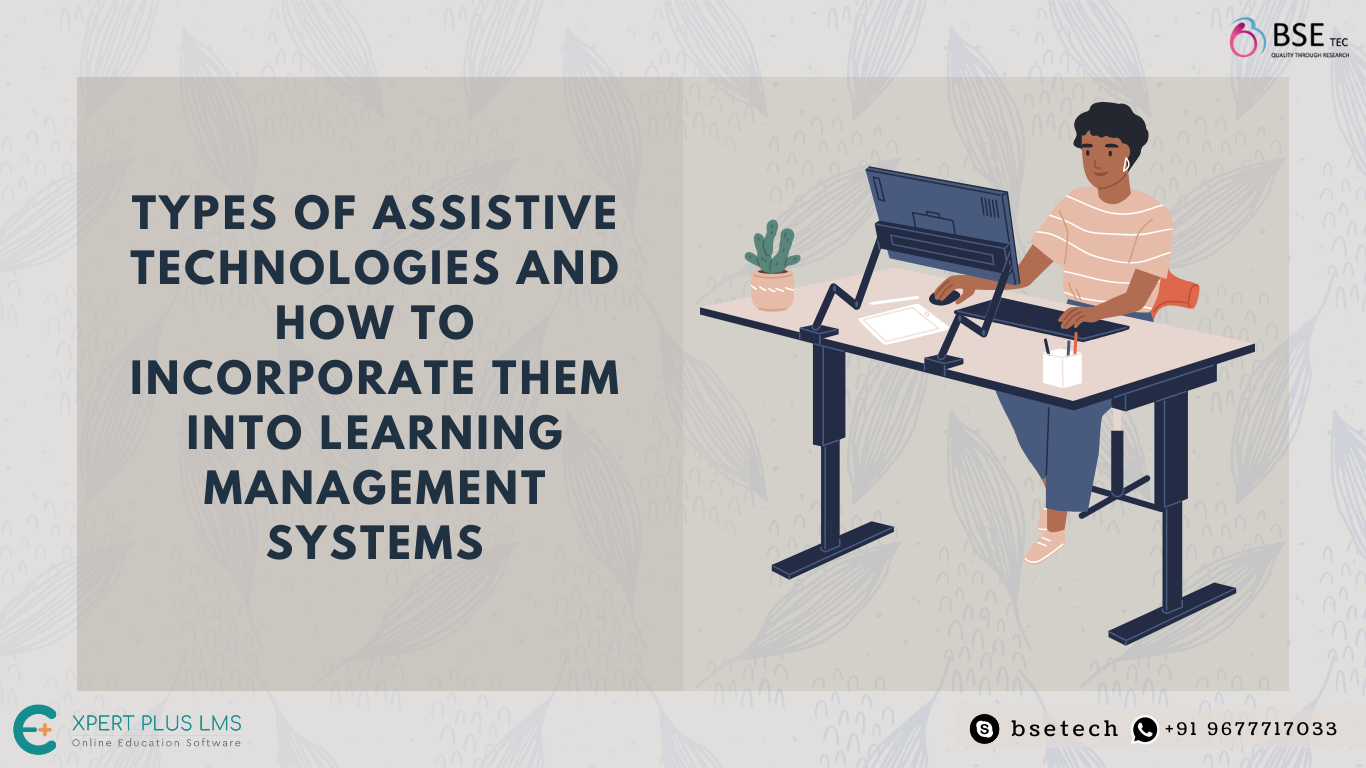Types of assistive technologies and how to incorporate them into Learning management systems
Special children with physical disabilities or learning disabilities like Autism, and dyslexia require personalized technologies in eLearning platforms. These assistive technologies aid them with learning the lessons
- Assistive technologies for reading: Reading is an important part of communication and education. Traditionally, our school systems are designed in such a way that we have to read textbooks to gain deep insights into the course. So, reading directly affects our proficiency in a subject. Reading disorder means when a person has trouble reading or has trouble understanding what they read. Sometimes reading disorders in children are due to health conditions like ADHD, dyslexia, and Hyperlexia. This hugely affects a child’s education. But, thanks to the technology we have personalized assistive technologies for eLearning platforms that aid students with reading disabilities to learn their courses to their full potential.
- How to incorporate them into the eLearning platform: Technologies can help everyone with reading disorders and it doesn’t cost much. Text-to-speech and Audiobooks are some of the examples of assistive technologies for reading. The text-to-speech tool converts text into computer-generated voice, thus the student who has trouble reading can learn by listening. So, while building your online class, make sure you add podcasts, and audiobooks to the course to help students with reading disorders. Assistive technology tools are inexpensive and are almost free in smartphone apps and computers.
- Assistive technologies for writing: Writing disorder is a difficulty with language or spelling-based aspects of written expression. Disorders like Dysgraphia affects the writing abilities of a person. It may include problems with letter formation/legibility, letter spacing, spelling, fine motor coordination, rate of writing, grammar, and composition. This learning disorder may affect children, and adults, or can co-occur with dyslexia. Using wide-ruled paper, graph paper, or paper with raised lines to help with letter and word alignment, tools like pen grips and other writing aids help with the writing disorder.
- How to incorporate them into the online education platform: For people with writing disorders, assistive technologies can be a lifeline. It will be a huge boost for them to improve their potential in learning. One of the most widely used low-tech options to overcome writing disabilities is the use of Keyboards.
Other than that there are low-tech tool options like
- Handwriting tools: Using aids like pen grip, graph paper, and other physical tools.
- Dictation (Voice-to-text) tools: This comes as an in-built software in all computers and smartphones, which converts our speech into text. As we speak the words are transcripted directly in real-time and are shown as texts on screen. The only point to remember is to use this tool there shouldn’t be any speech disorder.
- Touch screens: Like keyboards touchscreens help people with writing disorders as it lets you input texts by just touching the screen.
- Spell check and grammar check: These tools are also in-built on all computers. Microsoft Word and Google Docs have in-built spell and grammar check options.
- Assistive technologies for listening comprehension: Kids with the auditory disorder usually cannot comprehend what they hear. They have difficulties in processing speech like other children which greatly affects their level of understanding.
- How to incorporate them into the online education platform: Assistive technologies for auditory disorders can be implemented in eLearning platforms easily. Assistive technology (AT) can help kids with auditory processing disorder better understand what they hear. Some of the tools are
- Noise cancellation headphones: It help block out background noise for kids who are sensitive to sound. Kids may find it helpful to connect their headphones to a white noise app that plays sounds like rain or static.
- Audio recorders: Audio recorders come as an in-built function in computers and smartphones. It allows kids to record classroom lectures or discussions. This way they can listen to a lecture several times if they didn’t comprehend it well enough the first time.
- Closed captioning: Closed captioning is a text version of the spoken part of a television, movie, or computer presentation. You would have used it on YouTube or Netflix for a better understanding of the language. We have a lot of low-tech tools and software that transcript lessons and other audio or video files.
Assistive technology is a human right obligation as identified by the United Nations Convention on the Rights of Persons with Disabilities (UNCRPD). As socially responsible people it is our responsibility to design and develop Learning management systems and eLearning platforms with in-built assistive technologies. availability of high-quality, affordable assistive products as a right ensuring equal opportunities. For launching your Learning management system, Checkout Expertplus LMS, the best LMS clone script to launch a udemy-like website in a few hours seamlessly. and contact BSEtec for more details and a free demo.





